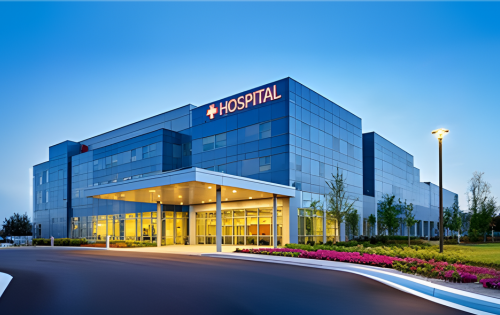
When Seconds Matter: Advancing Healthcare Facility Safety Through Integrated Systems
Healthcare never stops, neither can safety.
Healthcare facility safety is more than compliance; it’s a commitment to protecting life in environments where every decision, second, and system matters. Hospitals, clinics, and care centers face constant pressure to remain secure, resilient, and ready. From fire protection and access control to communication and monitoring, every component must function as one, because even a momentary failure can have lasting consequences.
Today, forward-thinking healthcare leaders are shifting from reactive risk management to proactive resilience—leveraging technology, data, and integrated systems to create safer, smarter facilities built for the future of care.
Preparedness in Healthcare Environments
Preparedness isn’t just about meeting regulations—it’s about anticipating risk. Healthcare facilities operate in a high-stakes ecosystem of patient care, technology, and compliance. Emergency response plans, infrastructure design, and system integration all play critical roles in maintaining safety and operational continuity.
Modern healthcare demands connected systems that can detect, communicate, and respond instantly. By aligning fire, security, and communication technologies under a unified strategy, healthcare organizations can strengthen both their compliance posture and their ability to act decisively when seconds truly matter.
Every Second Counts in Patient Safety
When an incident occurs—whether it’s a fire alarm, an unauthorized entry, or a system malfunction—speed and clarity are everything. Delays in communication or uncertainty about what’s happening can put lives at risk. Integrated safety systems bring together detection, alerts, and response in real time, giving staff immediate visibility and actionable insight.
In a healthcare setting, this integration bridges the gap between awareness and action. It enables nurses, doctors, and facility teams to respond faster, communicate clearly, and protect patients without hesitation. Every second saved can mean a life preserved.
Protecting What Matters Most
Healthcare facilities safeguard far more than medical equipment or records—they protect people at their most vulnerable. True healthcare facility safety extends beyond physical systems to encompass trust, accountability, and continuity of care.
Unified fire, life safety, and security systems reduce complexity and ensure that protection never lapses. Compliance with NFPA codes, Joint Commission standards, and AHJ requirements provides confidence that these systems are always audit-ready and performance-driven. When safety systems work seamlessly, clinicians can stay focused on what matters most: their patients.
Building a Safer Future for Healthcare
As healthcare continues to evolve, so must the systems that protect it. The future of patient safety lies in smarter integration—where data, communication, and human expertise intersect to create faster, more coordinated responses. By prioritizing readiness and leveraging technology that empowers caregivers, healthcare leaders can build environments that are not only compliant, but truly resilient.
When seconds matter, Pavion Connects and Protects.



